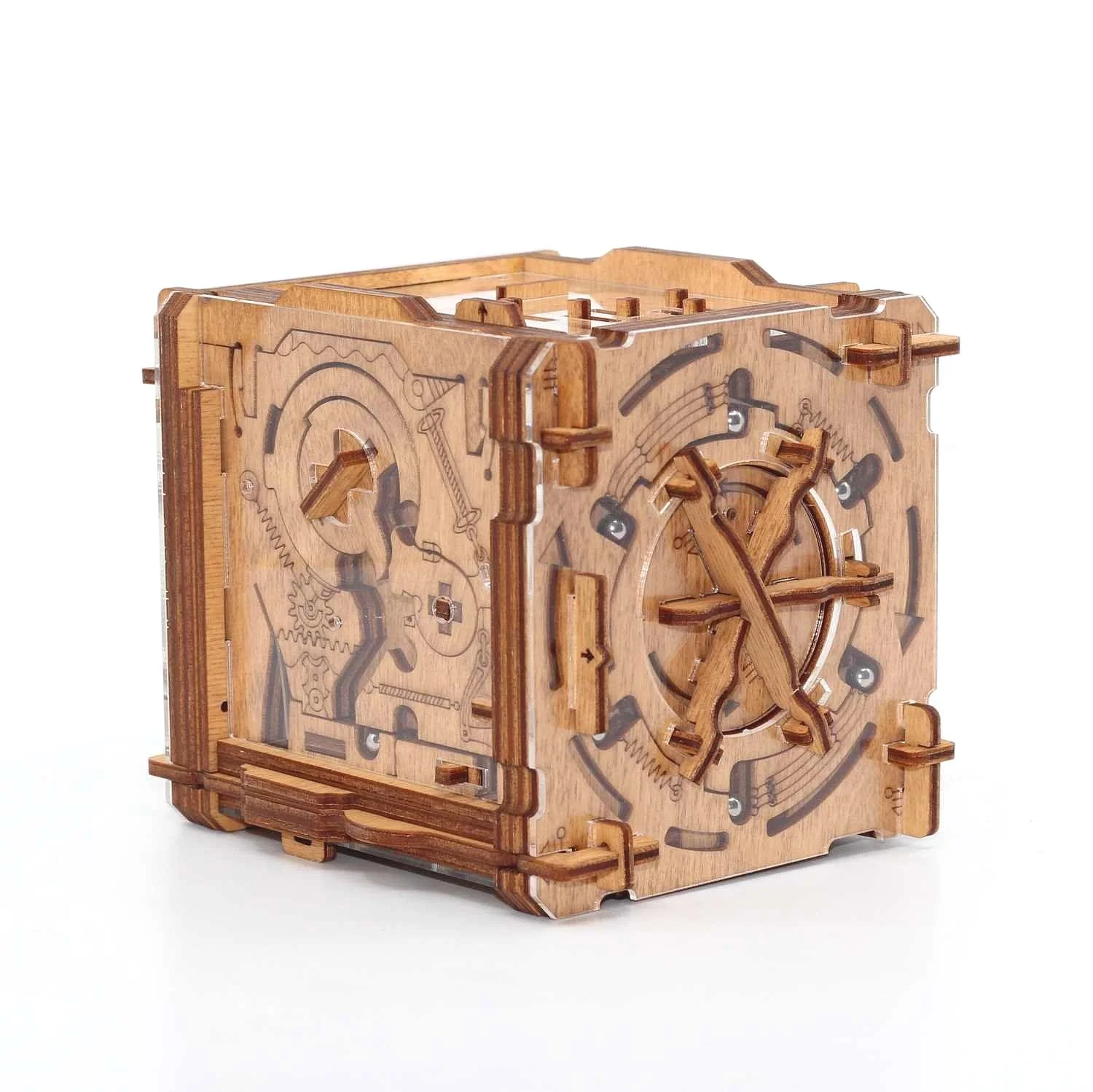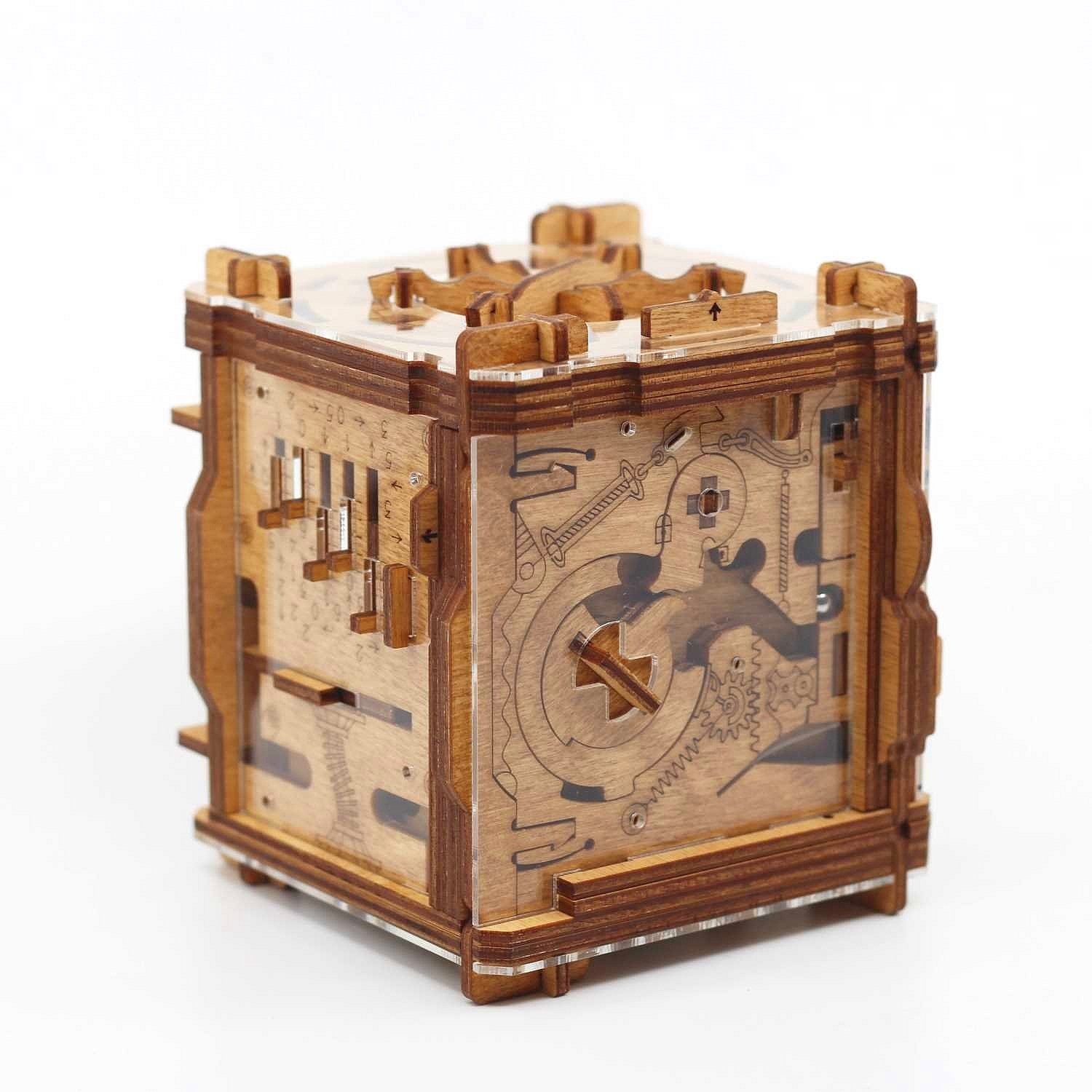Get a Clue
Cambridge Labyrinth
Membership in the Cambridge Philosophical Society, the preeminent scientific organization at the distinguished English University, will cost you twenty pounds. However, access to the inner circle, which dates back to 1819, and represents the most secret chamber of secrets, where the mysteries of the universe unfold, within the most brilliant minds of the day, (or so the story goes), required one to solve the great Cambridge Labyrinth, a mechanical enigma created by the society’s founder, William Whewell. One of the great British academics of the early nineteenth century, Whewell was well versed in numerous disciplines and subjects. He helped found and served as President of the British Association for the Advancement of Science and was Master of Trinity College at Cambridge. He is, perhaps, best remembered today for his contribution to the lexicon of science. In 1834, Whewell was reviewing a recently published book by Mary Somerville, On the Connexion of the Physical Sciences. Common terminology of the era to describe someone like Somerville, and Whewell, for that matter, included “natural philosopher”, a very broad term, and the more precise “man of science” or “man of letters”. These terms would clearly not do to describe Somerville, so Whewell coined a new word, “scientist”, in a rather progressive endorsement of gender equality in the sciences.
Cambridge Labyrinth Clue box by iDventure
As it turns out, Whewell was not the actual founder of the Cambridge Philosophical Society, and there was no secret society with a mysterious mechanical puzzle box to solve – at least, until now. That story is a little “historical fiction” created by the team at iDventure, a company based in Meerbusch, Germany who have been successfully creating some of the most satisfying self-contained escape room puzzle boxes in the world over the past few years. The core group of three partners who formed the company came from the escape room industry, bringing experience in both escape board games and physical escape room design and development. Their company produces immersive game experiences of various types, including the self-contained puzzle box category. Recently there have been increasing numbers of such puzzle boxes, perhaps due to the increasing popularity of escape rooms in general. It’s not a new concept, and I also wrote about an extremely enjoyable “mystery in a box” puzzle in the past, but the iDventure team get the self-contained formula just right and seem to consistently produce the best of this genre, which they have cleverly named “Cluebox”. I suspect the name may evolve similar to “Xerox” or “Kleenex” as a branding which ultimately describes the object perfectly.
its simply marbleous
Each subsequent box since their first, “Schrödinger’s Cat”, has improved upon the formula, building more complex puzzles and mechanisms which effect each side of the box in turn or even out of turn. Unlike a traditional puzzle box, the solution to solve a Cluebox is right in front of you, etched onto the box itself, but the symbols, riddles, and pathways must be deduced. There are even tools to discover at times, and every element and step can be solved with logic and observation. It’s fun to experience these boxes with friends, or on your own, if you are up to the challenge! Their newest box, “Cambridge Labyrinth”, is a departure from previous models in a few ways. The puzzle is constructed from both laser cut wood as well as acrylic panels, which allow new functionality ideal for the other novel feature, a complex marble maze which traces its path across all the faces of the box, presenting different challenges at each phase.
left hand rule? yeah, right
Managing director Alexander Krys shared some insights into their company and the story behind their newest design. “We are coming from the escape rooms industry. So we have a mix of people who created either physical escape rooms or escape board games. The idea came from one of our team who had a laser at home and suggested to try the approach, which became our full time job for last 3 years. Later on we engaged with mechanical designers to bring more expertise into the team for how to combine the mechanics and logical puzzles in the best way. I personally don't play competitors puzzles in order to keep my brain as much as possible from thinking about copying other's ideas. Although in any case we're influenced by existing products: for example the marble puzzle was born as a mix of Cluebox and existing marble runs.”
Daedalus had nothing on this
Clueboxes go through numerous phases of design and prototyping. The team always starts with an initial concept, then creates the separate locking mechanisms and tests them. Once the various mechanisms work and fit the overall theme, a full prototype box is built, tested, modified, and so on, through many cycles until they are really happy with the whole combination of elements. Only at that point do they begin to apply logical riddles which fit the theme and link the mechanisms, and this too may then require iterative tuning of mechanisms to fit the riddles. Several testing cycles later and the box is finally ready for release – a process that takes a whole year from start to finish.
Labyrinth by Natalie Mauser-Carter
As for the history behind the “Cambridge Labyrinth”, Alexander admits, “I have mentioned a bit of the story of how Labyrinth was "born". The story it is something we invented, sorry if i disappoint you :) But our stories are always mixed with the real facts and people (unless they come from science fiction). So if we talk about the Labyrinth - all people and organizations existed, except the cube. Actually, who knows, maybe there was something similar but kept as a secret by the organization ;)” Despite how many different mechanisms there are packed into each Cluebox, plenty of ideas get left on the drawing board. The company is extremely sensitive to how expensive the boxes already are for a “one time puzzle”, and will often leave out an idea which will drive production costs even higher, to keep things affordable for the majority of people. One example on the Labyrinth is the endgame, where an idea to incorporate visual symbols during the final mechanism led to twenty failed prototypes and ultimately a simpler solution. The iDventure team has plenty of creativity still in store, and one idea in particular has been “turning around” in their minds and may be next. Alexander relates that “My personal favorite designer in any case it's Rubik and our dream is to create something similar that will exist and excite people forever - next Rubik cube!” I’m going to throw out a name here, just a suggestion - Rubox Clube, anyone?
solution to the maze
I’m raising my glass to the team at iDventure in celebration of their highly enjoyable “Clueboxes” and their newest creation, with an ideally named Old Fashioned cocktail. The drink was created by Natalie Mauser-Carter, a manager for Deutsch Family Wine and Spirits, while she was a spirits brand ambassador for Redemption whiskey, winner of the Rye Whiskey Brand of Year in 2021. Redemption follows in the path of the original American whiskey, making rye using recipes which date back from before Prohibition. Mauser-Carter, a bartender from Austin, Texas, balances flavors of the season perfectly in this lovely winter drink which augments and highlights the rye with nutty sherry and sweet almond liqueur. Here’s to navigating the metaphorical maze of life – cheers!
This pair with amaze you
Labyrinth by Natalie Mauser-Carter
1 ½ oz bourbon (Redemption)
½ oz Oloroso sherry
½ oz amaretto
3 dashes Peychaud’s bitters
Orange peel and brandied cherry garnish
Stir ingredients with ice and strain into a rocks glass over a single large cube, garnish
explore more:
For more information about Clueboxes and purchasing visit:







